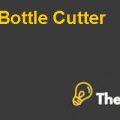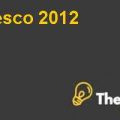
FAMILY MART- CONVENIENCE STORE
INTRODUCTION
Convenience stores are becoming common in China. These stores are retail stores for youth belonging to the affluent class in China. As estimated by consultancy Access Asia using the data from the China Chain Store and Franchise Association; the annual revenues in China’s convenience stores were RMB 425 billion. The total numbers of convenience stores in China is 380,000 and are increasing day by day.
Family Mart is a foreign store. It is a Japan based business. It started its business in the year 1981. By 2009, the total number of Family Mart convenience stores increased to 22444 all over the world. In China, Family Mart has 400 outlets. They had initially launched their stores in Shanghai.
Till yet Family Mart has convenience stores mostly in Shanghai and Chengdu in China. There operations in China are profitable and they are considering the possibility of opening more stores in China. There are 5000 outlets in Shanghai only for its population of 20 million.
MARKETING PLAN
This section presents the comprehensive marketing plan for Family Mart convenience stores. An explicit internal and external analysis is conducted. The total numbers of convenience stores in China is 380,000 and are increasing day by day. The expansion of Family Mart in Beijing is discussed in detail and strategies for this expansion are formulated. A comprehensive SWOT analysis is the part of below given marketing plan. Finally, a marketing mix is developed to determine various choices regarding offering products in Beijing.
SITUATION ANALYSIS
The situation analysis for the Family Mart is conducted by doing a detailed PEST analysis.
| PESTEL Analysis |
Opportunities |
Threats |
Neutral |
Remarks / Evidence |
| Economic Factors | X | Chinese economy grew by an impressive rate of 11.4% in the year 2007. Incomes were increased and the government’s efforts to increase spending patterns were also witnessed. Household consumption also rose. The purchasing power of customers in Beijing is more than any other city in China. | ||
| Demographic Factors | X | Family Mart has experience in Japanese and Taiwanese market. These markets were small and homogenous. Chinese markets are different from those markets. It is a vast market where consumer tastes and buying patterns also vary in various cities. Thus, Family Mart needs to develop a different strategy that is not similar to the strategy used for the demographics of Japan and Taiwan. They were required to develop a business model that suits the lifestyle and tastes of each city of China. | ||
| Political / Legal Factors | X | The Chinese government did not use to welcome foreign businesses in China. However, during the last decade the Chinese government has changed their attitude towards foreign brands coming in China. Thus, the legal and political environment is now supporting the foreign players to enter the market. However, even today building government connections and relationships help in growth of the business. | ||
| Technological Factors | X | Family Mart is not efficient in technological terms. To maintain the retail operation of such big scale; the processes must be automatic and the company must have automatic systems that keep the track of inventory, cost of goods sold and time schedules. The example of such technological system can be ERP. | ||
| Global Factors | X | Globally, the retail business is growing today. Many giants such as Amazon, Wall-Mart and Target are earning billions from retail business. | ||
SWOT ANALYSIS
SWOT analysis is a marketing tool used to analyze internal and external environment for a business by analyzing strengths, weaknesses, opportunities and threats................
This is just a sample partial case solution. Please place the order on the website to order your own originally done case solution.













